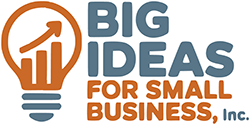 Most small businesses incur travel and entertainment costs. They travel to see vendors, attend trade shows, and meet with customers and clients. If you are like most small businesses, you usually reimburse employees for such costs incurred on behalf of your company. This can be a costly hassle if you don’t take advantage of certain breaks in the tax law.
Most small businesses incur travel and entertainment costs. They travel to see vendors, attend trade shows, and meet with customers and clients. If you are like most small businesses, you usually reimburse employees for such costs incurred on behalf of your company. This can be a costly hassle if you don’t take advantage of certain breaks in the tax law.
Make sure your reimbursement arrangement qualifies as an “accountable plan” to simplify payroll issues. And consider relying on government-set rates for lodging, meals, and incidental expenses to eliminate the need for receipts.
Accountable plan rules
An accountable plan avoids the need to treat reimbursements as taxable compensation. This means the reimbursements do not have to be reported on employees’ W-2s. What’s more, no employment taxes are due on the reimbursements.
While the term accountable plan sounds like some formal arrangement, all you need to do to meet the tax law requirements is to satisfy the following three conditions:
- The expenses must have a business connection. They must have paid or incurred while performing services as an employee of your company.
- The employee must adequately account to your company for these expenses within a reasonable period of time (e.g., date, location, etc.). A reasonable period for this purpose is within 60 days of incurring the expense.
- If you advance funds, the employee must return any excess reimbursement or allowance to your company within a reasonable period of time. A reasonable period for this purpose is 120 days.
If you don’t have an accountable plan in place now, get ready for 2016. In the minutes of your annual meeting that you’ll likely hold in December, include the adoption of an accountable plan and advise employees of the time limits for their substantiation and returning unused advances.
New rates for 4Q 2015
You can simplify reimbursements by relying on government-set per diem rates. By relying on these rates you don’t have to retain receipts for expenses covered by the rates (e.g., lodging, meals). There are two government-set rates:
- Federal per diem rates, which has a basic rate, and special rates for higher-cost areas. For the fiscal year beginning October 1, 2015, the standard rate for most areas within the U.S. is $140 per day, of which $89 is for lodging and $51 is for meals and incidental expenses (M&IE). This is up from $129 ($83 for lodging; $46 for M&IE) in the government’s fiscal year beginning October 1, 2014 (ending September 30, 2015).
- High-low substantiation rates, which have only two rates for travel within the continental U.S.: one for high-cost areas and another for all other areas. For travel starting October 1, 2015, through September 30, 2016, the rate is $275 per day for high-cost areas (up from $259 per day in the previous fiscal year), and $185 per day for travel to all other areas (up from $172 per day in the previous fiscal year). Of the $275, $68 is the meals portion and, of the $185, $57 is treated as the meals portion. Also, some of the high-cost area designations have changed.
Regardless of which set of rates you use, only 50% of the meals portion is deductible (unless you’re in the transportation industry as explained later).
You can use the new rates effective October 1 or continue to use the rates that took effect last October 1. The only requirement is consistency for all of your reimbursed employees.
Note: Self-employed individuals are barred from using the high-low substantiation method for their travel costs. They must retain receipts and other records in order to claim deductions for business travel. They can, however, use the IRS per diem rate for M&IE. For the government’s fiscal year beginning October 1, 2015, there are six tiers for M&IE, depending on the location of the travel. The standard rate for most areas is $51 per day; the other tiers are $54, $59, $64, $69, and $74
Transportation industry workers
Employees and self-employed individuals in the transportation industry can use a flat rate to figure the deduction for M&IE. Those in the transportation industry include interstate truckers, bus drivers, pilots, and others subject to the Department of Transportation limits on hours of service.
For the government’s fiscal year beginning October 1, 2015, the rate within CONUS is $63 per day (up from $59 per day in the previous fiscal year) and the rate for travel outside the continental U.S. (OCONUS) is $68 per day (up from $65 per day in the previous fiscal year).
Also, instead of the 50% deduction limit stated earlier, employees and self-employed individuals in the transportation industry can deduct 80% of the flat rate M&IE.
Resources
You can find the rules for accountable plans and other related information in IRS Publication 463. Currently, the only publication available is for 2014, which wasn’t released until a few weeks ago. When the 2015 publication will become available is anyone’s guess. And for 2016?


